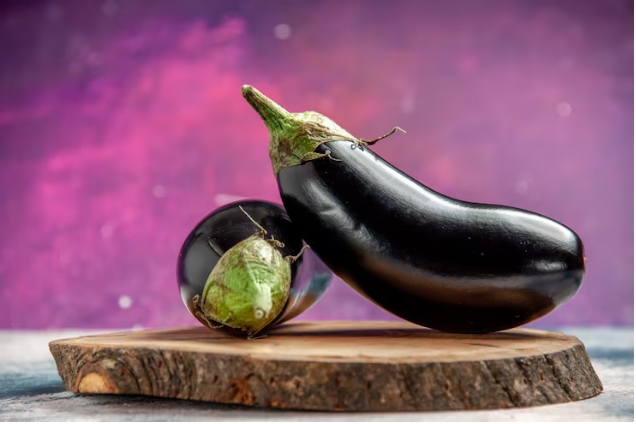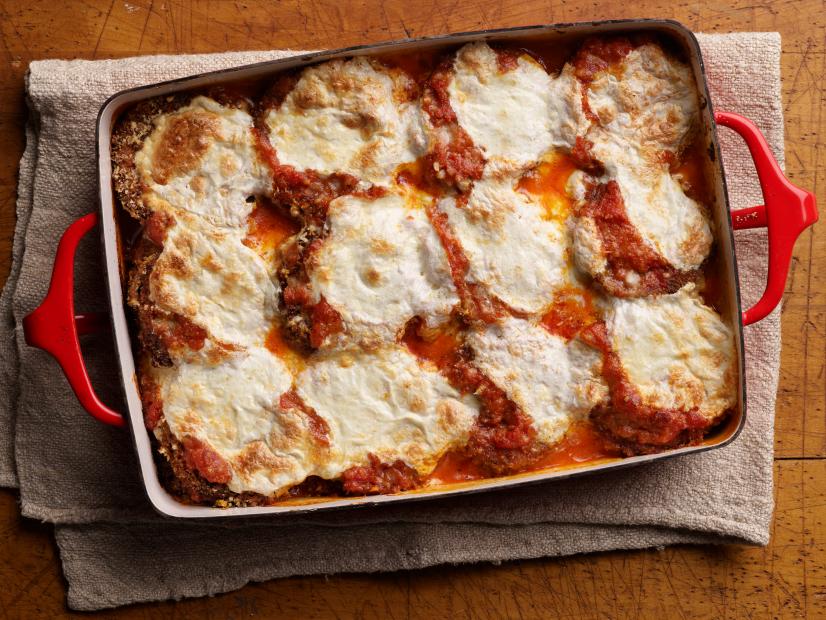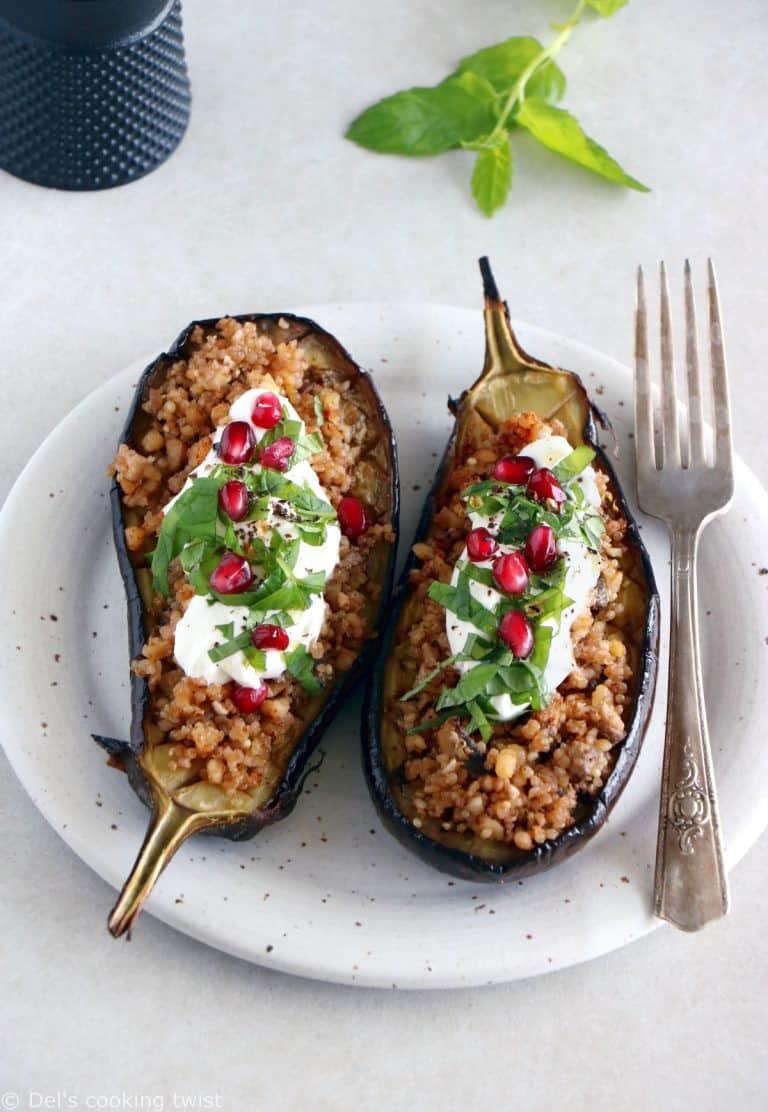
How To Cook Eggplants (Aubergines)
Eggplant, also known as aubergine, is a highly versatile and nutritious vegetable that can be used in a variety of dishes. Its unique texture and mild flavor make it an excellent canvas for various cooking techniques and flavors.
How To Cook Eggplants
There are many different methods of cooking eggplant that can result in delicious and flavorful dishes. grilling and roasting to frying and stuffing.
Do You Have To Peel Eggplant Before You Cook It?
Whether you need to peel eggplant before cooking it depends on the recipe and personal preference. In many cases, you can cook eggplant with the skin on, and it can add a pleasant texture and extra nutrients to your dish. However, there are instances when peeling the eggplant is recommended.
Here are some considerations for both options:
-
Cooking Eggplant with the Skin On:
- Retains Nutrients: The skin of eggplant is rich in fiber, antioxidants, and other essential nutrients. Cooking the eggplant with the skin intact helps retain these valuable nutrients in your dish.
- Texture: Eggplant skin can become tender when cooked properly, adding a desirable texture to your dish.
- Convenience: Leaving the skin on can be more convenient and save time, especially when preparing dishes like roasted eggplant or eggplant slices for grilling.
-
Peeling Eggplant before Cooking:
- Bitterness: Some varieties of eggplant can have a slightly bitter taste, which is often concentrated in the skin. Peeling the eggplant can help reduce this bitterness, making the dish more enjoyable.
- Personal Preference: Some people simply prefer the taste and texture of eggplant without the skin.
- Recipe Requirements: Certain recipes may call for peeled eggplant to achieve a specific texture or flavor. For example, if you’re making a creamy eggplant dip like Baba Ganoush, peeling the eggplant is often recommended to achieve a smoother consistency.
If you decide to peel the eggplant, here’s how you can do it:
- Wash the eggplant under running water to remove any dirt or residue.
- Trim off the stem of the eggplant.
- Use a vegetable peeler or a sharp knife to peel the skin off the eggplant, working from top to bottom in a downward motion. Alternatively, you can cut off the skin in vertical strips.
For many dishes, such as stews, curries, and stir-fries, you can leave the skin on without any issues. However, if you find that the eggplant skin is particularly tough or bitter, or if your recipe specifically calls for peeled eggplant, feel free to remove the skin before cooking.
In the end, whether you peel the eggplant or not comes down to personal preference and the requirements of the recipe you’re preparing. Experiment with both methods to see which one you prefer and which works best for the dish you’re making.
How Long Does Eggplant Take To Cook?
The cooking time for eggplant can vary depending on the cooking method and the size and thickness of the eggplant pieces. Here’s a general guide on how long eggplant takes to cook using different cooking techniques:
- Grilling or Roasting:
- For medium-sized eggplant slices or halves, grilling or roasting usually takes about 20 to 30 minutes at 400°F (200°C) or medium-high heat on the grill. Turn the eggplant halfway through the cooking time to ensure even cooking and to get those lovely grill marks or caramelization.
- Sautéing or Stir-frying:
- When sautéing or stir-frying diced or sliced eggplant, it typically takes about 10 to 15 minutes over medium-high heat. Keep stirring the eggplant pieces to prevent them from sticking to the pan and to ensure they cook evenly.
- Frying:
- Frying small eggplant slices or pieces in hot oil will take approximately 3 to 5 minutes, depending on the thickness. The goal is to achieve a golden-brown and crispy texture on the outside while ensuring the inside is cooked and tender.
- Baking:
- When baking whole eggplants, it can take around 30 to 45 minutes at 375°F (190°C) or until the eggplant is tender and easily pierced with a fork. Baking times may vary depending on the size and freshness of the eggplant.
- Steaming:
- Steaming eggplant can take about 10 to 15 minutes, depending on the size and thickness of the pieces. Steaming is a gentler cooking method that preserves the natural flavors and nutrients of the eggplant.
Keep in mind that these are approximate cooking times, and the actual time may vary based on factors like the individual stove or oven’s temperature accuracy and the specific eggplant variety used.
To ensure that the eggplant is fully cooked and ready to eat, always check the texture and taste during the cooking process. The eggplant should be soft and tender but not mushy. Cooking times may also vary depending on the intended recipe; for some dishes, you might prefer the eggplant to be more firm and hold its shape, while in others, a softer and more melted texture is desired.
When cooking eggplant, it’s essential to pay attention to the recipe instructions and adjust the cooking time accordingly to achieve the desired results.
What Is The Healthiest Way To Eat Eggplant
The healthiest way to eat eggplant is to cook it using methods that retain its nutrients while minimizing the use of unhealthy fats and excessive salt. Here are some healthy cooking methods and tips to get the most nutrition from eggplant:
-
Roasting or Grilling: Roasting or grilling eggplant is a great way to enhance its flavor without adding too many extra calories. By cooking it with minimal oil and high heat, you can achieve a smoky, delicious taste while preserving its nutrients.
-
Baking: Baking eggplant in the oven is another healthy option, as it requires less oil compared to frying. You can brush the eggplant with a small amount of olive oil and bake it until it becomes tender and lightly browned.
-
Steaming: Steaming eggplant is a gentle cooking method that helps retain most of its nutrients. Simply cut the eggplant into bite-sized pieces and steam until tender, usually around 10 to 15 minutes.
-
Sautéing: When sautéing eggplant, use minimal oil (such as olive oil) and cook it over medium heat. Stir-frying with other vegetables and spices can create a tasty and nutritious dish.
-
Avoid Excessive Salting: In the past, salting eggplant was done to remove bitterness, but modern eggplant varieties are less bitter. However, if you prefer to salt it, use a small amount and rinse it off before cooking to minimize sodium intake.
-
Use Healthy Cooking Oils: When using oil in your eggplant recipes, opt for healthier choices like extra virgin olive oil, which is rich in monounsaturated fats and beneficial antioxidants.
-
Pair with Nutrient-Rich Ingredients: Combine eggplant with other nutrient-rich ingredients like tomatoes, garlic, onions, and various herbs and spices to boost the overall nutritional value of your dishes.
-
Eat the Skin: Eggplant skin is packed with fiber and antioxidants, so try to leave it on when cooking, especially if you grill or roast it. The skin also adds a lovely texture and color to your dishes.
-
Don’t Overcook: To preserve the nutrients, avoid overcooking eggplant. Cook it until it is tender but still holds its shape. Overcooking can lead to nutrient loss.
-
Combine with Protein and Whole Grains: Create balanced and nutritious meals by pairing eggplant with lean proteins like grilled chicken, fish, or legumes. Also, serve it alongside whole grains like quinoa, brown rice, or whole wheat couscous for added fiber and nutrients.
Eating eggplant in various healthy recipes can contribute to a balanced diet, providing essential vitamins, minerals, and antioxidants. Remember to experiment with different cooking methods and flavor combinations to discover the most delicious and nutritious ways to enjoy this versatile vegetable.
3 Eggplant Recipes
Here are three delicious and easy-to-follow eggplant recipes to try in your kitchen.
Ingredients:
- 2 medium-sized eggplants, sliced into 1/2-inch rounds
- 2 tablespoons olive oil
- Salt and pepper to taste
- 1/4 cup balsamic glaze (store-bought or homemade*)
Instructions:
- Preheat your grill to medium-high heat.
- Brush both sides of the eggplant slices with olive oil and season with salt and pepper.
- Place the eggplant slices on the grill and cook for 4-5 minutes on each side until grill marks appear, and the eggplant is tender.
- Transfer the grilled eggplant slices to a serving platter and drizzle balsamic glaze over them.
- Serve as a delicious side dish or add them to sandwiches, salads, or pasta for extra flavor and texture.
*Homemade Balsamic Glaze: Ingredients:
- 1 cup balsamic vinegar
- 2 tablespoons honey or brown sugar
Instructions:
-
In a small saucepan, combine the balsamic vinegar and honey (or brown sugar) over medium heat.
-
Bring the mixture to a simmer and let it cook for 10-15 minutes, stirring occasionally until it thickens and reduces by half.
-
Remove from heat and let it cool. The glaze will thicken further as it cools.
2. Eggplant Parmesan:
Ingredients:
- 2 large eggplants, sliced into 1/4-inch rounds
- 2 cups breadcrumbs (preferably seasoned)
- 1 cup all-purpose flour
- 4 large eggs, beaten
- 2 cups marinara sauce
- 2 cups shredded mozzarella cheese
- 1 cup grated Parmesan cheese
- Fresh basil leaves for garnish
- Olive oil for frying
- Salt and pepper to taste
Instructions:
-
Preheat the oven to 375°F (190°C). Grease a baking dish with olive oil or cooking spray.
-
Set up a breading station with three shallow dishes: one with flour, one with beaten eggs, and one with breadcrumbs.
-
Dredge each eggplant slice in flour, then dip into the beaten eggs, and finally coat with breadcrumbs, pressing gently to adhere.
-
In a large skillet, heat olive oil over medium-high heat. Fry the breaded eggplant slices for 2-3 minutes on each side until golden brown. Transfer to a paper towel-lined plate to drain excess oil.
-
In the prepared baking dish, spread a layer of marinara sauce, followed by a layer of fried eggplant slices. Sprinkle mozzarella and Parmesan cheese over the eggplant. Repeat the layers until all the ingredients are used, finishing with a layer of cheese on top.
-
Bake in the preheated oven for 25-30 minutes or until the cheese is bubbly and golden.
-
Garnish with fresh basil leaves before serving. This classic Italian dish is best enjoyed with a side of pasta or a fresh salad.
2. Stuffed Eggplant with Quinoa and Vegetables:
Ingredients:
- 4 medium-sized eggplants
- 1 cup quinoa, rinsed
- 2 cups vegetable broth or water
- 1 small onion, finely chopped
- 2 cloves garlic, minced
- 1 cup diced tomatoes (fresh or canned)
- 1 cup diced zucchini
- 1 cup diced bell peppers (red, yellow, or green)
- 1 tablespoon olive oil
- 1 teaspoon dried oregano
- 1 teaspoon dried basil
- Salt and pepper to taste
- 1/2 cup crumbled feta cheese (optional)
- Fresh parsley for garnish
Instructions:
- Preheat the oven to 375°F (190°C).
- Cut the tops off the eggplants, and carefully scoop out the flesh to create boats, leaving a 1/2-inch thick shell. Reserve the scooped-out flesh for the filling.
- In a medium saucepan, bring the vegetable broth or water to a boil. Add quinoa, reduce heat to low, cover, and simmer for about 15 minutes or until the quinoa is cooked and the liquid is absorbed.
- In a large skillet, heat olive oil over medium heat. Add chopped onion and garlic and sauté until translucent.
- Add the diced eggplant flesh, tomatoes, zucchini, and bell peppers to the skillet. Cook for 5-7 minutes until the vegetables soften.
- Stir in cooked quinoa, dried oregano, dried basil, salt, and pepper. Adjust seasoning to taste.
- Stuff each eggplant boat with the quinoa and vegetable mixture. Place the stuffed eggplants in a baking dish.
- Cover the dish with aluminum foil and bake for 25-30 minutes until the eggplant is tender.
- If desired, sprinkle crumbled feta cheese over the stuffed eggplants during the last 5 minutes of baking.
- Garnish with fresh parsley before serving. These flavorful and nutritious stuffed eggplants make a satisfying main course for vegetarians and vegans alike.
Conclusion: Eggplant is an incredibly versatile vegetable that can elevate the flavor and nutritional profile of various dishes. Whether you prefer the smoky taste of grilled eggplant, the comforting layers of Eggplant Parmesan, or the wholesome goodness of stuffed eggplants, these recipes provide a delightful way to enjoy this unique vegetable. So, get creative in the kitchen and savor the deliciousness of eggplant in your next culinary adventure. Happy cooking!

:max_bytes(150000):strip_icc():format(webp)/grilled-eggplant-3057146-hero-01-01d4eac9a44d473b816e023327714c4e.jpg)

